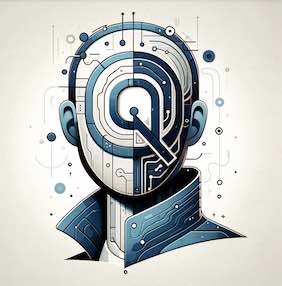AI as a Game Changer Transforming Design Methodologies

Artificial Intelligence (AI) revolutionizes design methodologies. AI in design refers to computer systems mimicking human cognitive functions for creative tasks. The history of AI in design dates back to the 1960s with early computer-aided design tools. Modern design practices increasingly rely on AI for efficiency, productivity, and innovation. AI empowers designers to manage complex data, create intricate visuals, and streamline workflows. The integration of AI tools enables designers to optimize designs, automate repetitive tasks, and unleash creativity. AI transforms graphic design, allowing artists to craft unique designs rapidly. Games with AI generated content exemplify the potential of AI in design, showcasing its ability to create immersive experiences.
The AI Revolution in Design
Traditional Design Methodologies
Human-Centered Design
Human-centered design focuses on user needs. Designers prioritize user experiences. Research informs design decisions. Empathy drives the creative process. Iterative testing refines solutions.
Design Thinking
Design thinking emphasizes problem-solving. Designers identify challenges. Ideation generates multiple solutions. Prototyping tests concepts. Feedback loops improve outcomes. Collaboration enhances creativity.
Agile Design
Agile design promotes flexibility. Designers work in short sprints. Rapid prototyping accelerates development. Continuous feedback guides iterations. Adaptability ensures project success.
AI-Powered Design Approaches
Generative Design
AI algorithms create design variations. Designers input parameters. Computers generate numerous options. AI explores unconventional solutions. Human creativity combines with machine efficiency.
"AI can manage complex data, boost efficiency and productivity, and unlock new creative possibilities." - The Role of Artificial Intelligence in Design
Predictive Design
AI analyzes user behavior patterns. Designers anticipate user needs. Machine learning informs design decisions. Predictive models optimize user experiences. Data-driven insights guide creativity.
Adaptive Design
AI personalizes user interfaces. Designers create flexible layouts. Machine learning adapts content dynamically. User preferences inform design changes. Customization enhances engagement.
Benefits of AI-Powered Design:
- Streamlined workflows increase productivity
- Expanded creative possibilities inspire innovation
- Data-driven insights inform design decisions
- Automated tasks free designers for strategic thinking
AI transforms the design landscape. Designers leverage technology for enhanced creativity. Human expertise remains crucial. AI augments rather than replaces human skills. The future of design combines human ingenuity with AI capabilities.
AI Applications in Various Design Fields
Graphic Design
Automated Logo Creation
AI algorithms generate unique logo designs. Designers input brand preferences. Algorithms produce multiple options. AI considers color theory. Designers select final concepts.
AI-Assisted Image Editing
Adobe Sensei enhances photo editing. AI automates image corrections. Algorithms recognize objects. Content-aware tools simplify retouching. Designers focus on creative decisions.
Color Palette Generation
AI analyzes color trends. Algorithms suggest harmonious combinations. Designers receive instant inspiration. AI considers brand guidelines. Color palettes adapt to different mediums.
Product Design
Rapid Prototyping
AI accelerates prototype creation. Algorithms generate 3D models. Designers iterate quickly. Virtual simulations test designs. AI optimizes manufacturing processes.
Material Optimization
AI analyzes material properties. Algorithms suggest optimal compositions. Designers reduce waste. AI considers sustainability factors. Products become more efficient.
User Experience Prediction
AI anticipates user behavior. Algorithms analyze interaction data. Designers create intuitive interfaces. AI simulates user journeys. Products evolve based on predictions.
Game Design
Procedural Content Generation
AI creates vast game worlds. Algorithms generate unique landscapes. Designers focus on core gameplay. AI populates environments. Games offer endless exploration.
Dynamic Difficulty Adjustment
AI adapts game challenges. Algorithms analyze player performance. Designers ensure balanced experiences. AI personalizes difficulty levels. Games remain engaging for all skill levels.
AI-Driven Character Behavior
AI enhances non-player characters. Algorithms simulate realistic interactions. Designers craft compelling narratives. AI creates dynamic dialogue. Game worlds feel alive.
Canva Design exemplifies AI-powered creativity. Designers access intelligent recommendations. AI suggests layout improvements. Algorithms automate repetitive tasks. Creativity flourishes with AI assistance.
Framer X revolutionizes interface design. AI predicts user preferences. Designers create responsive layouts. Algorithms optimize for different devices. User experiences improve through AI insights.
Sketch2Code transforms sketches into functional code. AI recognizes design elements. Designers accelerate prototyping. Algorithms generate HTML. Development processes become streamlined.
"AI-powered tools empower designers to create more impactful and user-centric designs, ultimately benefiting both businesses and end-users." - Industry Expert
AI transforms design across multiple fields. Designers leverage technology for enhanced creativity. Human expertise remains crucial. AI augments rather than replaces human skills. The future of design combines human ingenuity with AI capabilities.
Games with AI Generated Content
Revolutionizing Game Development
Automated Game Testing and Debugging
AI algorithms streamline game testing processes. Developers utilize AI-powered tools for bug detection. Automated systems simulate player behavior. AI identifies performance issues. Game quality improves through efficient testing.
Procedural Storytelling
AI generates dynamic narratives. Game worlds evolve based on player choices. Algorithms create unique character interactions. Storytelling becomes more immersive. Players experience personalized adventures.
"Gen AI is set to redefine storytelling by creating immersive worlds and plotlines. To engage audiences, it will make entertainment more interactive and personal through virtual reality (VR) experiences." - Game Developer
Level Design Optimization
AI algorithms analyze player data. Game environments adapt to user preferences. Developers create balanced challenges. AI suggests optimal level layouts. Player engagement increases through tailored experiences.
Enhancing Player Experience
Smarter NPCs and Dynamic Worlds
AI enhances non-player character behaviors. NPCs respond realistically to player actions. Game worlds feel alive. AI creates dynamic ecosystems. Players encounter unique situations each playthrough.
Personalized Gaming Experiences
AI tailors gameplay to individual preferences. Algorithms analyze player behavior patterns. Game difficulty adjusts automatically. Content recommendations match player interests. Gaming becomes more engaging for each user.
Testimonial from Design Expert:
"AI is becoming a helping hand for design teams—delivering creative campaigns faster, better and at scale."
Adaptive Game Mechanics
AI modifies game rules based on player performance. Algorithms balance gameplay elements. Challenges evolve as players improve. Games remain engaging for all skill levels. Player satisfaction increases through adaptive mechanics.
Benefits of AI-Generated Content in Games:
- Endless variety in game worlds
- Personalized storytelling experiences
- Improved game balance
- Enhanced replayability
- Reduced development costs
Games with AI generated content offer unprecedented possibilities. Developers leverage AI to create immersive experiences. Players enjoy dynamic worlds. AI enhances creativity. The future of gaming combines human ingenuity with AI capabilities.
Benefits of AI in Design
Enhanced Creativity
Idea Generation
AI algorithms produce innovative design concepts. Designers receive diverse inspirations. Creative software suggests unique combinations. AI analyzes trends. Designers explore unconventional ideas.
Design Variations
AI tools generate multiple design options. Designers experiment with different styles. Algorithms create variations rapidly. AI considers design parameters. Designers select optimal solutions.
Inspiration Sources
AI curates vast design databases. Designers access global inspiration. Algorithms suggest relevant references. AI analyzes artistic styles. Designers discover new creative directions.
Increased Efficiency
Time-Saving Automation
AI automates repetitive design tasks. Designers focus on strategic decisions. Algorithms handle routine processes. AI accelerates workflows. Designers complete projects faster.
Streamlined Workflows
AI optimizes design processes. Designers collaborate seamlessly. Algorithms manage project timelines. AI integrates design tools. Designers work more efficiently.
Resource Optimization
AI allocates resources effectively. Designers maximize productivity. Algorithms analyze resource usage. AI suggests optimal resource distribution. Designers reduce waste.
Data-Driven Decision Making
User Behavior Analysis
AI examines user interactions. Designers create user-centric designs. Algorithms identify behavior patterns. AI provides actionable insights. Designers improve user experiences.
Performance Prediction
AI forecasts design outcomes. Designers make informed decisions. Algorithms simulate user responses. AI predicts design effectiveness. Designers optimize designs proactively.
Trend Forecasting
AI analyzes market trends. Designers stay ahead of industry changes. Algorithms predict future design preferences. AI identifies emerging styles. Designers create forward-thinking designs.
Comparative Data:
- Traditional Design: Manual processes, limited variations
- AI-Enhanced Design: Automated tasks, numerous options
- Key Difference: AI boosts efficiency, productivity to unprecedented levels
"AI graphic design tools transform how artists express creativity, enabling unique designs in less time." - Industry Expert
Benefits of AI in Design:
- Expanded creative possibilities
- Accelerated design processes
- Data-driven design decisions
- Enhanced user experiences
- Improved resource allocation
AI revolutionizes design methodologies. Designers leverage AI capabilities. Creativity flourishes with technological assistance. AI enhances human ingenuity. The future of design combines innovation with efficiency.
Challenges and Ethical Considerations
Job Displacement Concerns
Changing Roles of Designers
AI technologies reshape design industry roles. Traditional design tasks become automated. Designers adapt to new responsibilities. AI tools augment human creativity. Design professionals focus on strategic thinking.
Upskilling and Adaptation
Designers acquire new technological skills. AI literacy becomes essential. Educational programs evolve. Continuous learning addresses skill gaps. Professionals embrace lifelong learning.
Human-AI Collaboration
Designers work alongside AI systems. Collaborative workflows emerge. AI enhances human capabilities. Design teams leverage AI strengths. Human creativity remains irreplaceable.
Creativity vs. Automation
Maintaining Human Touch
Designers preserve artistic expression. AI tools complement human skills. Creative vision guides AI applications. Human empathy informs design decisions. Emotional connections remain crucial.
Balancing AI Assistance
Designers control AI involvement. Creative processes blend human intuition. AI suggestions enhance ideation. Human judgment refines AI outputs. Designers maintain creative authority.
Preserving Artistic Integrity
AI respects original artistic vision. Designers safeguard unique styles. Ethical guidelines protect creative ownership. AI enhances rather than replaces creativity. Human artistry remains paramount.
Data Privacy and Security
Protecting User Information
AI design tools handle sensitive data. Designers prioritize user privacy. Robust security measures safeguard information. Ethical data practices build trust. User consent guides data usage.
Ethical Use of AI-Generated Designs
Designers consider ethical implications. AI-generated content undergoes scrutiny. Transparency informs design processes. Ethical guidelines shape AI applications. Responsible design practices prevail.
Intellectual Property Rights
AI raises copyright questions. Designers navigate complex legal landscapes. Clear ownership guidelines emerge. AI-assisted creations require attribution. Intellectual property laws adapt.
- Cautious Optimism: Designers express positive yet measured views on AI tools
- Ethical Concerns: Privacy, job displacement, creativity preservation top list
73%believe AI will significantly impact design industry within 5 years- Respondents emphasize need for human-AI collaboration
"AI tools should augment human creativity, not replace it. Designers must guide ethical AI implementation." - Industry Expert
Challenges in AI-Assisted Design:
- Balancing automation with human creativity
- Ensuring data privacy and security
- Adapting to evolving job roles
- Navigating intellectual property issues
- Maintaining ethical design practices
AI transforms design methodologies. Ethical considerations shape AI adoption. Designers navigate complex challenges. Human creativity remains central. The future of design balances innovation with responsibility.
Future Prospects of AI in Design
Emerging Technologies
Advanced Machine Learning Algorithms
AI design tools utilize sophisticated algorithms. Machine learning enhances creative processes. Designers leverage predictive capabilities. AI algorithms analyze vast datasets. Design solutions become increasingly intelligent.
Natural Language Processing in Design
NLP technologies transform design communication. Designers interact with AI using voice commands. AI understands design briefs accurately. Natural language interfaces simplify design processes. Collaboration between humans and AI improves.
Augmented and Virtual Reality Integration
AR and VR technologies revolutionize design visualization. Designers create immersive prototypes. AI enhances virtual environments. Clients experience designs in realistic settings. Design iterations become more effective.
Cross-Disciplinary Applications
AI in Fashion Design
AI algorithms analyze fashion trends. Designers create innovative clothing designs. Machine learning predicts consumer preferences. AI-generated patterns inspire creativity. Fashion industry embraces technological advancements.
AI in Industrial Design
AI optimizes product designs. Designers create efficient manufacturing processes. Machine learning enhances material selection. AI simulations test product durability. Industrial design becomes more sustainable.
AI in User Interface Design
AI personalizes user experiences. Designers create adaptive interfaces. Machine learning analyzes user behavior. AI-driven recommendations improve usability. Interface designs evolve based on user interactions.
Democratization of Design
Accessible Design Tools
AI-powered tools become user-friendly. Designers of all skill levels access advanced capabilities. Machine learning simplifies complex design tasks. AI democratizes creative processes. Design becomes accessible to wider audiences.
Personalized Design Solutions
AI tailors designs to individual preferences. Designers create customized experiences. Machine learning analyzes user data. AI-generated designs reflect personal tastes. Design solutions become highly personalized.
Collaborative AI-Human Design Platforms
AI enhances team collaboration. Designers work seamlessly with AI assistants. Machine learning facilitates knowledge sharing. AI platforms connect global design communities. Human creativity combines with AI efficiency.
Scientific Research Findings:
- AI Revolutionizes Design Process: Automation of repetitive tasks
- Enhanced Creativity: AI tools aid idea generation
- Intelligent Insights: Predict user preferences
Efficiency Boost: Unprecedented productivity levels
"AI integration in design unlocks new creative possibilities, driving innovation and efficiency." - Industry Expert
Benefits of AI in Future Design:
- Streamlined workflows
- Enhanced creativity
- Data-driven decision making
- Personalized user experiences
- Democratized design tools
AI transforms design methodologies. Designers embrace technological advancements. Human creativity remains essential. AI augments human capabilities. The future of design combines innovation with accessibility.
AI revolutionizes design methodologies. Designers leverage AI capabilities for enhanced efficiency. Human creativity remains essential. AI tools automate repetitive tasks. Designers focus on strategic aspects. The collaboration between human designers and AI algorithms unlocks innovation. Designers adapt to technological advancements. AI serves as a tool rather than a replacement. The design community embraces ethical AI implementation. Designers explore AI-powered solutions. The future of design combines human ingenuity with AI assistance. Designers harness AI potential while preserving unique creative qualities. AI integration drives progress in the design industry.
See Also
Unleash Your Blogging Prowess with AI-Powered Transformation
Elevate Your Content Mastery: Become a Marketing Visionary in 2024
The Content Creation Showdown: Writesonic AI vs. QuickCreator
Captivating Blog Designs: 8 Masterpieces to Ignite Your Creativity
Unleash Your Content Prowess: 5 AI-Driven Tools to Rival Scalenut

